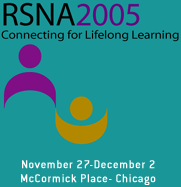
Abstract Archives of the RSNA, 2005
SSE01-05
Population-based Screening Using Full Field Digital Mammography (FFDM) with Soft Copy Reading: First-year Experience from Vestfold County, Norway
Scientific Papers
Presented on November 28, 2005
Presented as part of SSE01: Breast (Mammography)
Einar Vigeland MD, Presenter: Nothing to Disclose
Solveig Sand-Hanssen Hofvind, Abstract Co-Author: Nothing to Disclose
Herman Klaasen MD, Abstract Co-Author: Nothing to Disclose
Anne Wegener MD, Abstract Co-Author: Nothing to Disclose
Anne Line Abrahamsen MD, Abstract Co-Author: Nothing to Disclose
Per Skaane MD, PhD, Abstract Co-Author: Nothing to Disclose
To compare the results of high volume screening using FFDM with results from screen film mammography (SFM) within the Norwegian Breast Cancer Screening Programme (NBCSP)
Vestfold County joined the NBCSP in 2004 and started organized biennal screening of women aged 50-69 years using FFDM (Lorad Selenia, Hologic USA).
A total of 14,050 women were invited for 2 view FFDM in Vestfold during the first 12 months (Feb.1st 2004
-Jan.31st 2005), with 9,498 (67%) attending. Independent double reading was performed on workstations equipped with two 5 megapixel CRT monitors, by a total of four radiologists. All recalls were discussed in arbitration/consensus meetings. Mammographic workup of recalls was done using the same digital equipment. The screening database of the NBCSP provided a control group consisting of 143,265 women screened using conventional SFM in the first year of NBCSP in the other 18 counties of Norway.The same guidelines including independent double reading were followed. The results were compared using chi-square statistics.
Recall rate due to mammographic findings was 3.8% using FFDM compared to 4.2% in the control group (p= 0.115). 57 invasive breast cancers were diagnosed with FFDM (detection rate 0.60%) versus 743 with SFM (detection rate 0.52%),(p=0.321). In addition 20 ductal carcinoma in situ (DCIS) were diagnosed by FFDM (26.0% of all malignancies) and 135 (15.4%) by SFM (p=0.024). Positive predictive value of invasive tumours based on mammographic findings was 15.6% and 12.1%, respectively for FFDM and SFM (p=0.164).
For invasive breast cancers diagnosed at FFDM mean tumor size was 17.6mm, 25.5% was ≤ 10mm and 29.1% was lymph node positive. Corresponding figures for SFM were 15.3mm, 32.7% ≤ 10mm (p=0.339) and 25.6% lymph node positive (p=0.706). There was no statistically significant difference in grade distribution in the two groups (p=0.284).
There was no significant difference between FFDM and SFM exept for DCIS wich was diagnosed more frequently by FFDM. Screening with FFDM can safely be included in the NBCSP.
Vigeland, E,
Hofvind, S,
Klaasen, H,
Wegener, A,
Abrahamsen, A,
Skaane, P,
Population-based Screening Using Full Field Digital Mammography (FFDM) with Soft Copy Reading: First-year Experience from Vestfold County, Norway. Radiological Society of North America 2005 Scientific Assembly and Annual Meeting, November 27 - December 2, 2005 ,Chicago IL.
http://archive.rsna.org/2005/4407068.html

